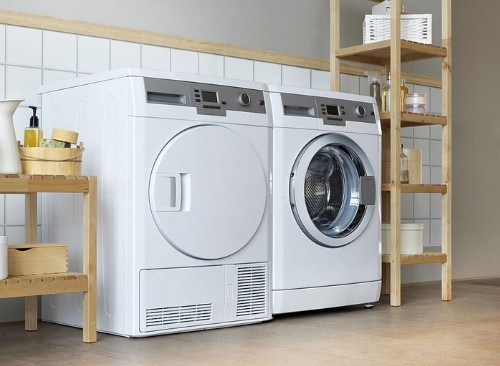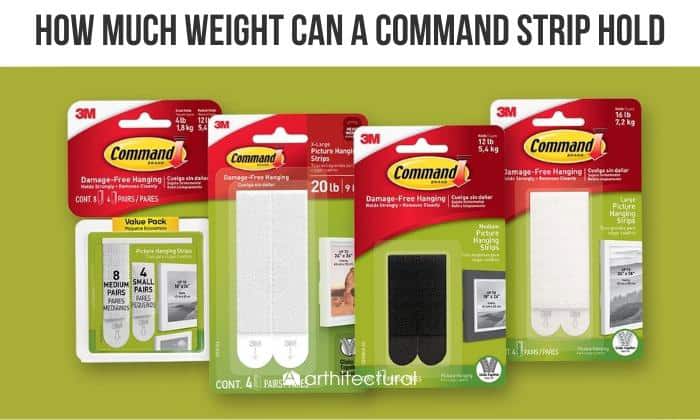Washing can be unpleasant, even for laundry lovers as it takes a lot of time, and many things may go wrong. While many people make their laundry tasks faster and more enjoyable with washing and drying machines, others still choose the traditional hand cleaning methods, especially with a clothes wringer, to dry their clothes.
It is great to take a couple of simple tricks to wring your clothes effectively whether you’re traveling, camping, lowering electricity bills, or just wanting to wash clothes by hand. So what are clothes wringer alternatives? This post will offer not just several alternatives to clothes wringer but also the benefits and drawbacks of owning a clothes wringer.
Table of Contents
Clothes Wringer Definition
Manual wringing every item of clothing probably reminds us to wear our garments until it gets dirty enough instead of dropping a sweater after a short use in a washing basket. Therefore, clothes wringers don’t have the intensive twisting movement involved like hand wringing.
A wringer is a two-roll device that squeezes wet clothing. It works like a dryer of clothes which can get rid of excess water and unpleasant odors from your clothes. Even though you can’t eliminate all the little humidity in your wet clothes, they reduce the drying process in the air. The remaining things depend on the sun and wind.
Pros and Cons Of Clothes Wringers
There are numerous occasions in which a clothes wringer is useful or annoying to you. Consider the following benefits and drawbacks you may get when possessing a wringer.
Benefits
- Lower risk of damage: It is hard and long-lasting. Its frame is made of stainless steel, while the covers are from durable maple wood and do not need oil. So, it can be left outside of the house without being damaged throughout winter.
- Simple technique: Using a wringer may make it easy for you because all you have to do is rotate your hand crank and wring your clothes.
- Time-saving: It is usually faster for heavier clothing, such as sweaters, jeans, or bedding, than hand wringing. It helps you do the challenging job and speed up the drying time.
- Minimal water and detergent consumption: Your clothes will be cleaned with a little amount of water and detergent as the rolling pin goes back and forth and pushes water to discharge dirt on clothes. It gets filthy garments clean without using stain removers, soaks, or anything else.
- Eco-friendly: Air drying is an excellent option for individuals who like to save energy, but it might take some time. That’s why a wringer is intended to wring the water from your clothing as much as possible. Compared to an electric dryer, it is beneficial for those who are off the grid to reduce their electricity expenses.
Drawbacks
- Take much effort: If you’re using a clothes wringer for so long, you may find the clothing between the two pins hard and irritating.
- Rolling pin problem: Although the task seems uncomplicated, sliding the clothing between the rolling pin clothes wringer is rather tough, especially when your items are too thick.
- Cause arm pain: Piling up your dirty washing and then wringing clothes dry can hurt your arms because they have to work during the entire process non-stop.
Alternatives to Clothes Wringer
Hand washing clothes seems to be a challenge since it can become a tedious and long-drawn process if you do not have the right method to wring out clothes. Thus, there are a few straightforward ways to wring clothes without a wringer. The alternatives available to you will vary according to your situation.
1. Wring clothes by hand
The first alternative is hand-wringing which is as convenient as using any equipment and maybe works better. Just twist the clothing tightly to make water flow out. That works only if you put effort into it. Hand wringing certainly removes excess water out of your wet clothes but does not dry them.
2. Clothes rack
Clothing implies that you simultaneously twist and squeeze to eliminate the extra water. Some products are thick enough to withstand a wringing, such as jeans, towels, or rags. It’s not recommended to wring out our clothes by hand as twisting and squeezing too much can degrade and damage the material.
A hanging rack is a traditional method of drying clothes. It gives you everything you need in one area, close to each other to dry your clothes. The ideal way is to hang and air-dry your laundry on the rack with hangers. But if you want to hang your clothes inside, remember to put a towel below it to collect water that may have been missing.
3. Clothesline
Perhaps many people grew up with a clothesline in the garden or balcony since they are the most affordable alternative to dry garments. Both the clothesline and hanging rack are excellent ways to dry up cleaned washing. When you have a hot and sunny day, your items will be nice enough to wear again in a moment. They will smell lovely and fresh in this way without any effort of twisting.
4. Hairdryer
Another straightforward alternative to a clothes wringer in this list is using heat to dry clothes, and almost every family has a hairdryer. They are popular objects to help people get ready for work or school in the morning. Dry your clothes with a quick blow from a hairdryer, especially when you need a working shirt, tie, and other moist objects drying in a short time.
A hairdryer is a great tool for drying not only your hair but also your clothes. Before you utilize the hair dryer, you must hand wring out clothes for a bit to remove any excess water. However, drying the whole laundry in this way would take forever. This is to dry out damp spots, pants, or crop tops. In other words, it works best for drying one or two pieces of the garment at a time.
5. Electric iron
The classic iron for drying your garments is a similar solution to the hair dryer option. Most of us certainly did this at some time in our lives. The best part about this approach is to dry and iron your clothing at the same time, practically multitasking.
We need two towels on the ironing table in this method. Place one towel below and the other above your clothing. The goal is to evaporate the humidity by iron heat without bringing the heat directly to your fabric. Ensure to adjust your iron temperature settings since hot water evaporation may become an issue. Working at a lower temperature is preferable for a longer time than burning the material.
6. Steam iron
One typical difficulty throughout the monsoon season is that garments cannot dry on a clothesline or rack under natural sunshine. They pile up, and moisture is stored in the rooms, which often causes numerous health issues. Similar to an electric iron, a steam iron is an efficient way of drying wet clothes.
Using a steam iron to dry your clothes is time-saving as you don’t need to turn around each item to clear creases. A steamer is more flexible and easier to operate, typically providing good results in delicate and thick fabrics.
7. Washers and dryers
Most washing machines have both washing and drying features in one single unit. It takes far less attention and energy to dry your clothes than a clothes wringer because it is entirely automatic. You can just toss your clothing in the machine, tap a couple of keys, and then do other work. Within no time, your clothes will be nice and dry when you will not have to do any manual work or spend much time on laundry.
8. Tumble dryer
Tumble dryers can hold up to 10 kilograms, whereas washing machines can manage only 5 or 6 kilograms. A tumble dryer is worth a try if you want to dry a lot of laundries. Like a washer and hairdryer, a dryer spins and blows hot air in a cylinder to dry your clothes. As a result, the warm moist air will be vented away.
After you wash a large laundry load, you may throw them all into the machine. The drying process can be from 10 to 15 minutes. In contrast, tumble dryers are an additional appliance, implying an extra charge and a greater space demand.
9. Hand crank
Due to its simplicity of use and added advantages, a hand crank gives an excellent alternative option. It works differently and is easier to use. All you have to do is put your clothes and a bit of detergent into the bucket. Then, rotate it by the manual crank.
Next, you can dump the water and spin the wet garments dry with it. Some individuals even hang their clothes on a clothesline to let the heat disinfect and whiten the clothes. The simple function of a hand crank allows you to dry several clothes simultaneously using your manual strength instead of electric power.
DIY Laundry Wringer
If you can’t afford a washing machine or dryer listed above, you may want to try some ideas for homemade clothes wringer. These three solutions are excellent when you wish to go off the grid and search for alternatives to a wringer.
Mop bucket
The first alternative for mop bucket. In supermarkets or stores, mop buckets are available in different sizes. The advantage of this approach is that it can dry and eliminate certain wrinkles from your garments.
- Buy a commercial mop bucket with a wringer added to it.
- Remove the mop head from the mop handle.
- Place your wet clothes on the spin-dry basket.
- Move the mop up and down to drain the excess water from your clothes into the mop bucket.
- Hang them on the clothesline or a rack to let the heat dry them thoroughly.
Rolling pin
Try the rolling pin and towel solution for a basic clothes wringer DIY created with materials that are already available in your house. To use this kind of alternative, you should dry one to two clothing items at once instead of the whole laundry.
- Spread a big towel on a flat surface like a plastic table, floor, or patio.
- On half of the towel, put your garments.
- Thoroughly wrap them with the other half of the towel.
- Roll the rolling pin over it. The water will be absorbed into the towel when pressing the clothes.
- Twist the clothes if there is no rolling pin. However, this isn’t a good idea because your hands may be exhausted and sore, so you shouldn’t do it frequently.
- Hang your clothes up in the sun.
Conclusion
Thanks to a sense of familiarity, and satisfaction in doing manual work, a clothes wringer might appeal to several households, but at some point, it isn’t there for us. Hopefully, you have found an appropriate alternative to drying clothes without a wringer via this post, regardless of whether you live off the grid or want to save money.
Choose one of the above clothes wringer alternatives carefully because some of them will need more consideration than the others, particularly when buying a washing machine. Was this content helpful to you? If yes, please write your opinions and share them with your family and friends.

Hi, I am Roseanne Jones, an aspiring home designer that wants to make you feel more at home with your new house.With nearly five years of redecorating old residents and arranging new ones, I am confident that I can give you the best advice on your lovely place.






























